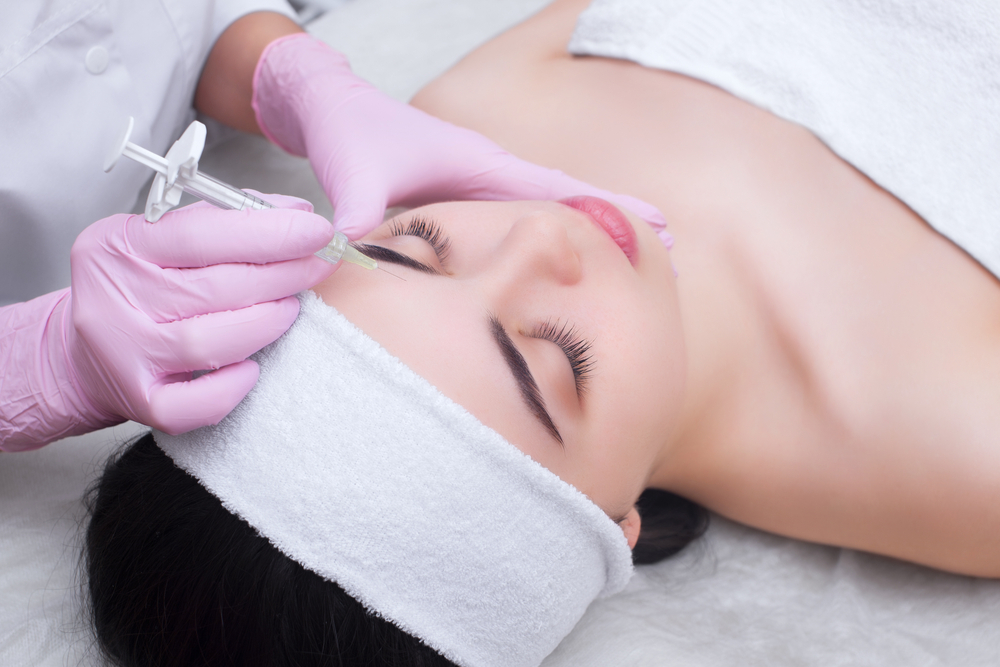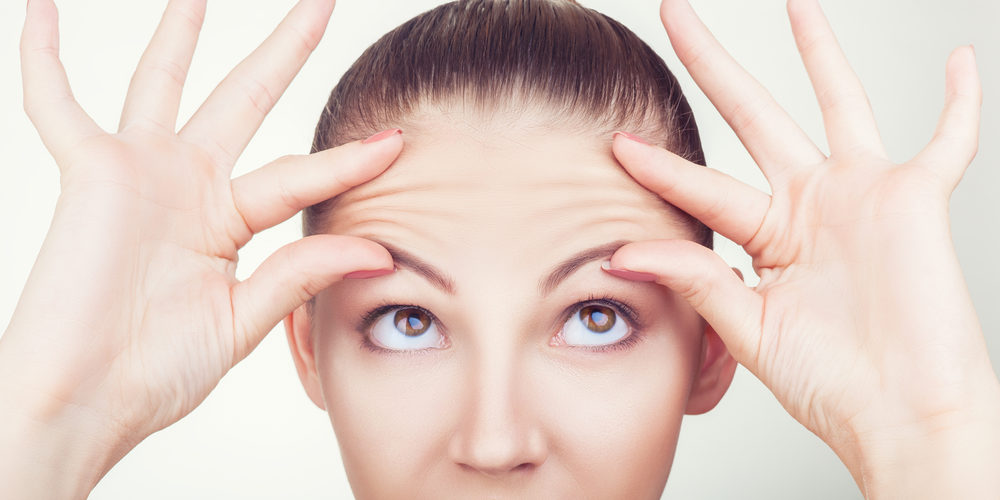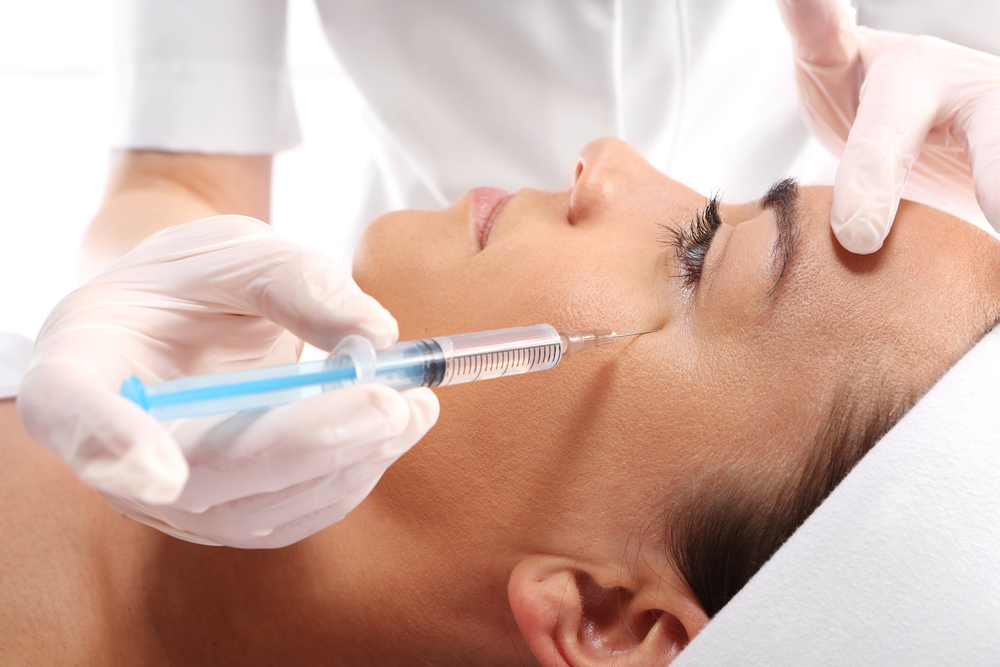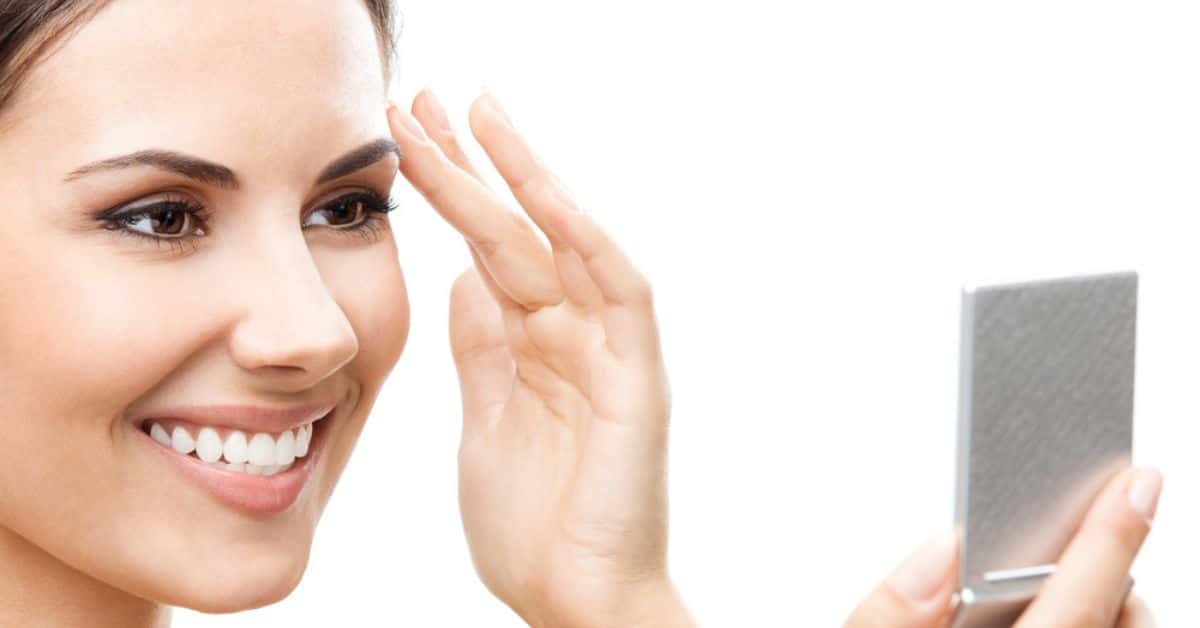- While side effects can occur in anyone, regardless of age or other health risks, Botox remains overwhelmingly safe.
- There have been no reported cases of people contracting botulism from Botox injections used in professional clinical situations.
- No one has ever died from Botox for cosmetic purposes.
- Patients with certain medical conditions including specific allergies, skin conditions, or urinary tract problems should not use Botox
What is Botox?
Botox — also known as botulinum toxin — is a protein made from a toxin produced by Clostridium botulinum, a bacteria associated with botulism. As an anti-aging treatment, Botox is injected into the facial muscles to smooth away wrinkles, especially in the top portion of the face.
A few different variations of the toxin exist, namely onabotulinumtoxin A, abobotulinumtoxin A, and incobotulinumtoxin A. These are available under a wide variety of brand names, namely:
- Botox Cosmetic
- Vistabel
- Vistabex
- Botox Vista
- Dysport
- Azzalure
- Xeomin
- Xeomeen
- Bocouture
“Botox is FDA-approved to reduce the appearance of frown lines and crow’s feet by temporarily paralyzing the muscles,” says Dr. Gregory LaTrenta, a New York City plastic surgeon and clinical associate professor of surgery at the Joan and Sanford Weill Medical College of Cornell University. “It also has popular off-label uses such as reducing forehead lines, marionette creases around the mouth, fine upper lip lines, and reducing the appearance of bands in the neck.”
As LaTrenta suggests, Botox injections have been “safety approved” for cosmetic purposes. “Since the effects of Botox only last around three to six months at best, there is complete return of muscle function in those regions of the face that were treated, and no long-lasting side effects,” adds LaTrenta.
>> Learn more about the injectable treatments Dysport, Botox, and Xeomin, with an in depth comparison of the three botulinum toxins.
Can Botox cause botulinum poisoning?
Botulism poisoning, which can occur as a result of food canning and packaging issues, is a life-threatening condition. When it comes to Botox treatments however, there’s really nothing to be concerned about.
People commonly contract botulism by being exposed to large doses of the bacteria through food, water, or soil. There have been no reported cases of people contracting botulism from Botox injections used in professional clinical situations.
Allergan, the makers of Botox, are required by law to detail any known complications or potential complications that could occur following the use of their products, even in extremely rare cases. For this reason, the company warns users of these potential complications, which may affect areas of the body away from the injection site and cause symptoms of botulism:
- Trouble speaking
- Loss of strength and muscle weakness all over the body
- Vision or eye problems
- Trouble breathing
- Trouble swallowing
In fact, contracting botulism from Botox is almost unheard of. In the only reported case available was over ten years ago. Four patients seeing an unlicensed medical physician and using an unlicensed Botox product did in fact contract botulism.
However, the Botox used in this case was not licensed for human use, and was only intended for laboratory research. This practice is highly illegal, of course, and is not common by any means. Incidentally, the unlicensed physician involved in this case was given prison time following the incident.
The overriding message here is to never buy Botox from eBay, or have an unlicensed person inject you. Always seek out a certified practitioner with adequate training and a proven track record performing this type of procedure.
>> To learn more about the dangers of having unlicensed individuals administer Botox, read our article about Botox at Home.
Botox fatalities: Is an overdose possible?
In 2009, the U.S. Food and Drug Administration (FDA) issued a warning that the effects of the botulinum toxin may spread from the area of injection to other areas of the body, potentially causing life-threatening swallowing and breathing difficulties.
These symptoms have mostly been reported in children with cerebral palsy being treated with botulinum toxin for muscle spasticity, a use of the drugs that has not been approved by FDA.
Rest assured that no one has ever died from Botox for cosmetic purposes. The amount of neurotoxin administered is measured in units, with one unit being calculated as the dose required to be toxic for 50% of medical mice.
The estimated lethal dose in humans is approximately 2,500-3,000 units, which obviously would never be administered in clinical practice. Typical doses for clinical application vary from 4 to 25 units for cosmetic purposes, and up to 300 units for therapeutic purposes — muscle spasticity, nerve overactivity, chronic migraine headaches, TMJ Pain, and so forth.
Even at a higher dose of over 360 cumulative units within a 3 month period, research has shown that patients undergoing therapeutic treatment for nerve over activity and lower limb spasticity experienced no life-threatening complications. The most adverse complications shown were general muscle weakness and leg pain that subsequently dissipated on its own.
Eye edema
Swelling around the eye following Botox occurs in up to 1.4% of all patients, and is more than twice as likely among those of East Asian descent — occurring 3.1% of the time.
Though an edema doesn’t look pretty, it’s not a serious complication. Onset usually occurs within five days and resolves itself within two to four weeks. The causes of edema are allergic reaction, infection, trauma, poor venous return, and poor lymphatic return to the eye after Botox.
Below is a patient before Botox (A), one week after treatment with significant eye swelling (B), and two weeks later (C), by which time the swelling had almost entirely resolved itself, without any intervention.
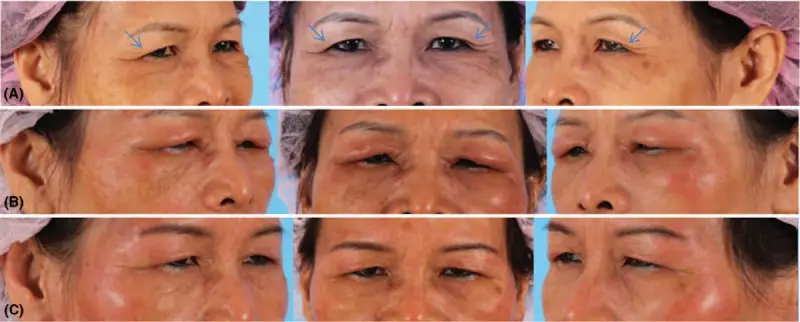
Eyelid, lip, or brow drooping
Brow, lip, or eyelid drooping and blurred vision occur at a rate of 0.8-3.4% and are often a consequence of poor injector technique. When administering Botox injections, it’s necessary to keep within certain anatomical margins as the toxin can spread from the point of the injection site to influence surrounding areas.
These side effects commonly occur within two weeks of treatment and usually resolve themselves within another two weeks.
LaTrenta says that this is one of the reasons to avoid rubbing the area or doing exercise for four to six hours after Botox treatments. Of course, if you select a highly qualified medical professional the risk of these side effects is greatly minimized.
Lip asymmetries and imbalances of the lower face
Studies show these side effects can occur at the slightly higher rate of 6.9%. “I have seen this in patients treated by other providers, and it is usually due to poor technique with injection of the wrong muscles,” says Dr. Bruce Katz, a board-certified dermatologist based in New York City.
Headaches
Some people experience headaches after Botox injections. Again, this side effect is usually the result of the injector’s technique rather than a consequence of the product itself. If this does occur, it normally dissipates within one to two days.
Pain, swelling, and bruising
Botox is injected into the target area using very small, fine hypodermic needles, and while it doesn’t always occur, bruising can result from the needle trauma to the skin. This usually resolves itself within a few days.
Some medications and supplements should be avoided to reduce the chances of bruising. “Aspirin and nonsteroidal agents, such as Advil and Motrin, should not be taken for ten days prior to the treatment,” says LaTrenta. Nonsteroidal anti inflammatory drugs, aspirin, ginkgo biloba, St John’s wort, ginseng, and vitamin E should also be avoided. “These can be restarted several days after your Botox treatment,” he adds.
Conversely, taking oral arnica or bromelain on the day of the injection can help to avoid bruises. If any bruising does occur, topical arnica can be used on the affected areas. Applying cold packs can also help alleviate any pain, swelling, or bruising.
“The amount and duration of swelling depends on where the Botox injection is performed, as well as individual tolerance. For example, some patients are just more likely to bruise,” says Katz. “In my experience, swelling is rare, but if it does occur, it goes away in a few hours.”
Looking fake
“If Botox is overdone, your forehead appearance most certainly can look frozen, shiny, and fake,” says LaTrenta. “This may be the desired look for some. However, there are many women who desire a placid look in their forehead and upper face. Before embarking on treatment, it’s always best to discuss the look you want to achieve with your plastic surgeon. I usually advise patients to preserve some motion to avoid a ‘fake’ look.’”
Most common cause of complications
A study in the Journal of Aesthetic Plastic Surgery evaluated 16 clinical trials consisting of a total of 42,405 individuals who had undergone Botox for facial rejuvenation. It found that adverse events are most commonly caused by injector expertise.
Katz shares one such experience, saying, “I had a patient who was treated elsewhere that had her left cheek and side of her mouth drooping from poor injection technique. It lasted four months, and looked like she was paralyzed on that side.” Katz reports this is the most extreme side effect he has ever seen.
“People considering Botox should absolutely review the credentials of any doctor or practice they’re thinking about visiting,” says Katz. “For safety and best results, Botox injections require precision and knowledge of human anatomy. The right provider will take the time to examine your face closely, answer any questions, and provide a qualified opinion on whether or not Botox is right for you.”
While side effects can occur in anyone, regardless of age or other health risks, Botox remains overwhelmingly safe. When side effects do occur, these usually resolve themselves in a short period of time.
Most importantly, the risk of side effects is dramatically reduced when the procedure is performed by qualified experts. In fact, most doctors admit they rarely see adverse effects other than some slight bruising and swelling.
Who should avoid Botox?
Patients with certain medical conditions should not use Botox. Make sure you tell your cosmetic practitioner about any medicines you’re currently taking before you start your Botox treatments, including prescription and nonprescription medicines, vitamins and herbal products.
Allergan suggests that you avoid Botox if you have:
- Allergies to any of the ingredients in Botox
- Any type of skin condition where you intend to be injected
- Urinary tract infection or urinary incontinence
Speak with your doctor before receiving Botox injections if you suffer from a disease that affects your muscles and nerves (such as Lou Gehrig’s disease), if you have chronic breathing problems, if you have had surgery on your face, or if you plan to undergo surgery in the near future.
Botox fact or fiction?
Studies and experts seem to agree that the risks involved in Botox are low. While there are risks involved with any procedure, the vast majority of the issues that we explored either basically never occur, occur in a small percentage of patients but quickly resolved themselves, or only occur when the procedure is done by unqualified injectors.
In short, only you can decide if the risks are worth taking, but the evidence suggests that when performed by an experienced board-certified medical professional, Botox is unlikely to cause any problems.





